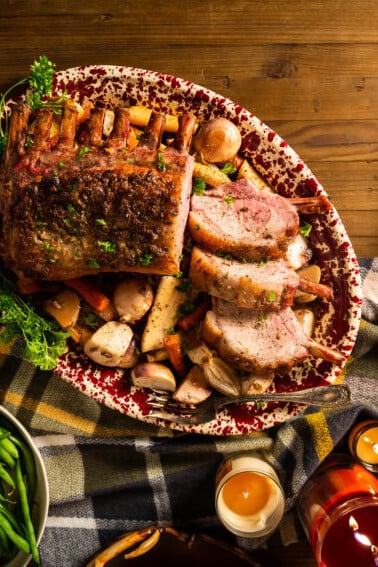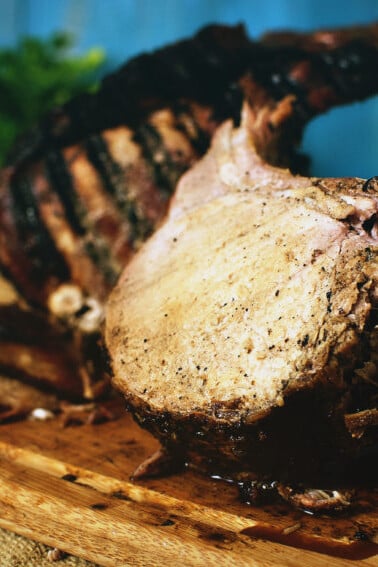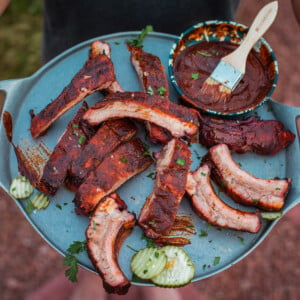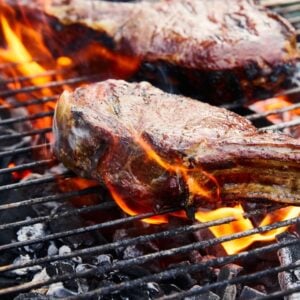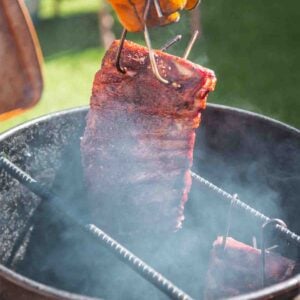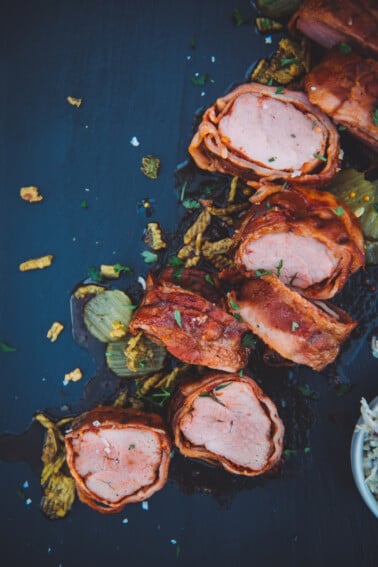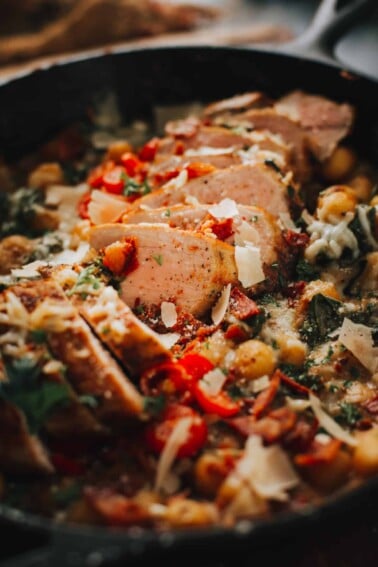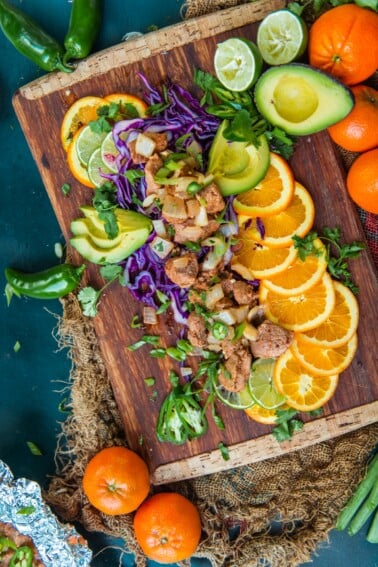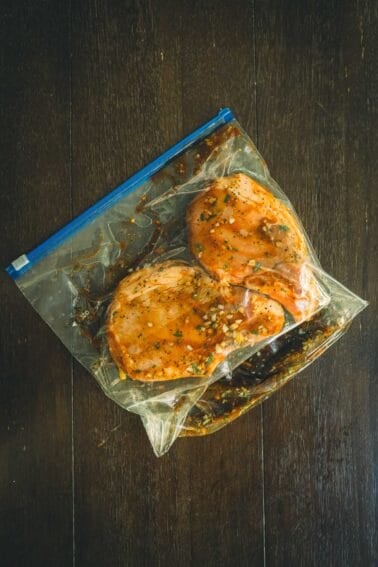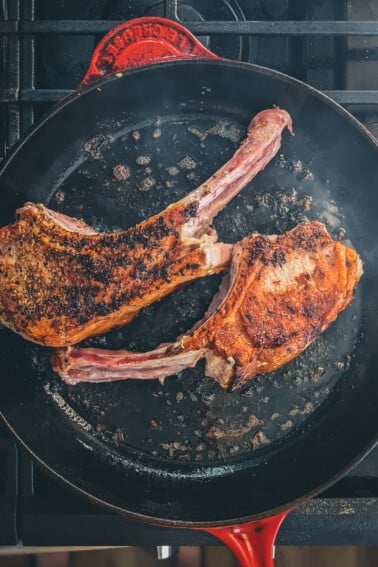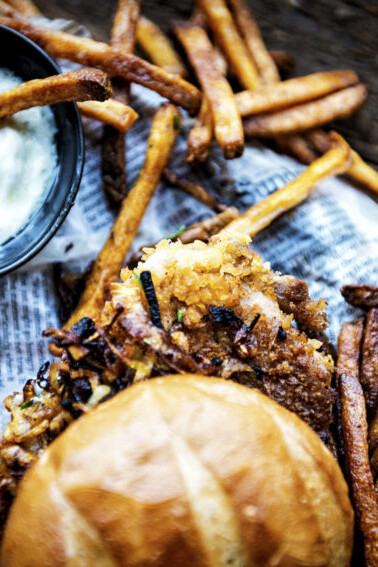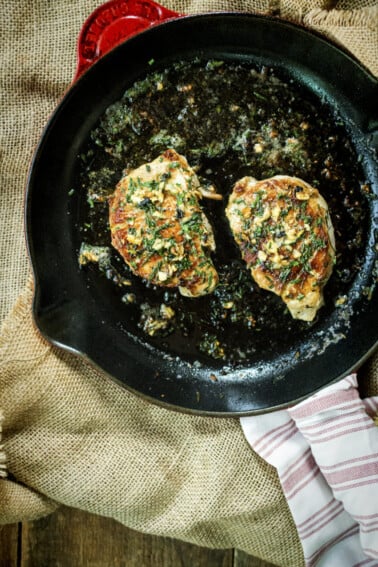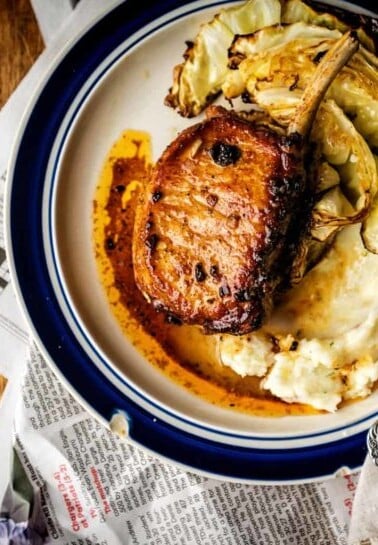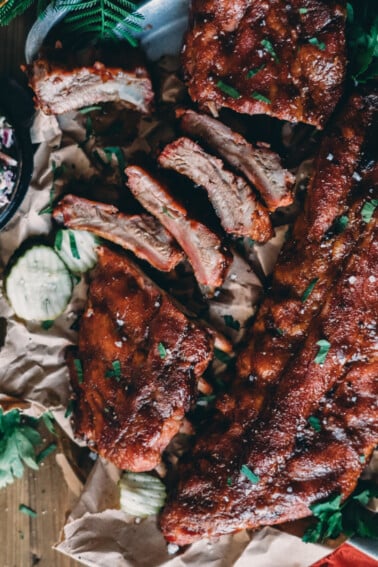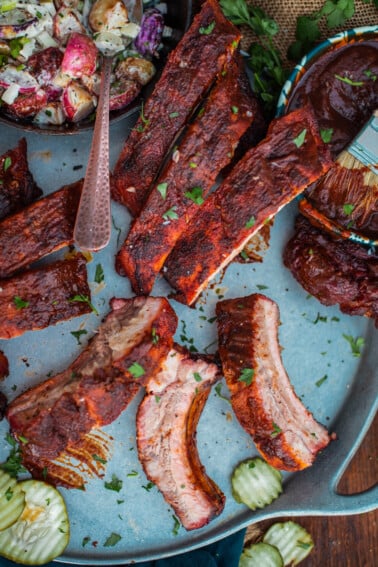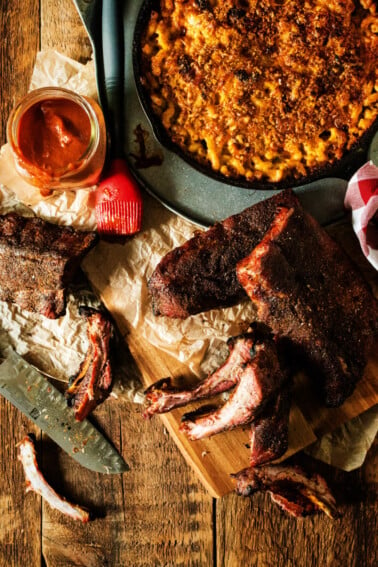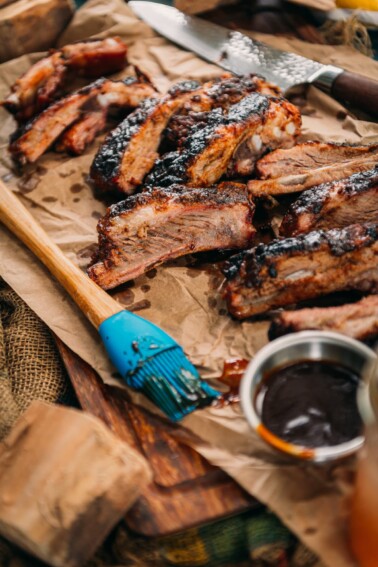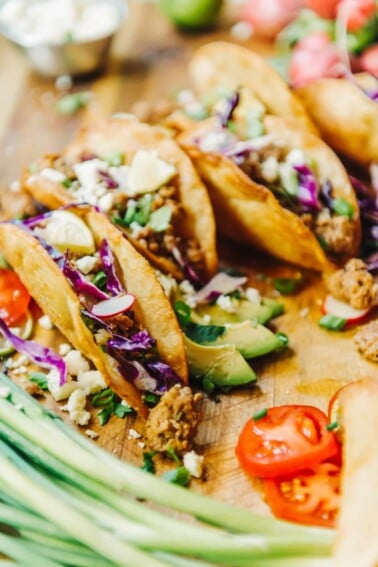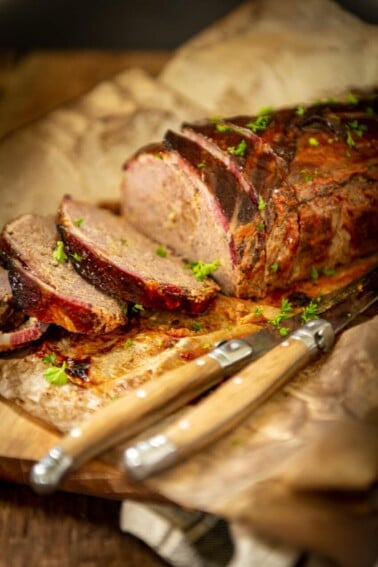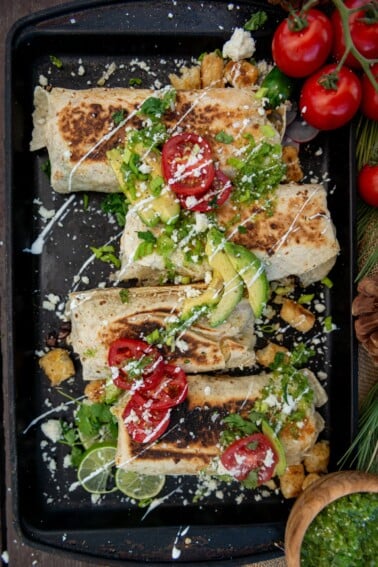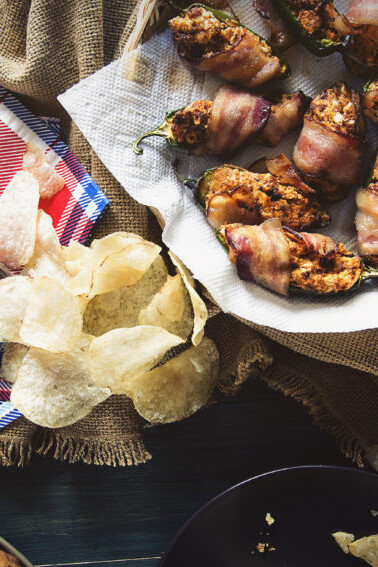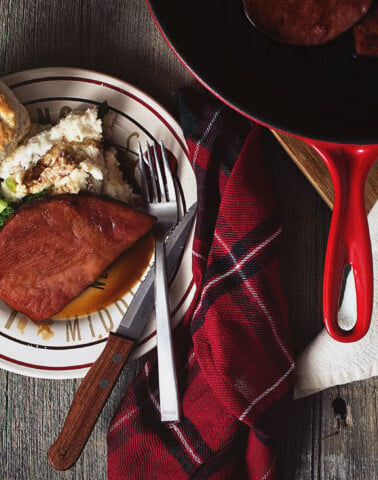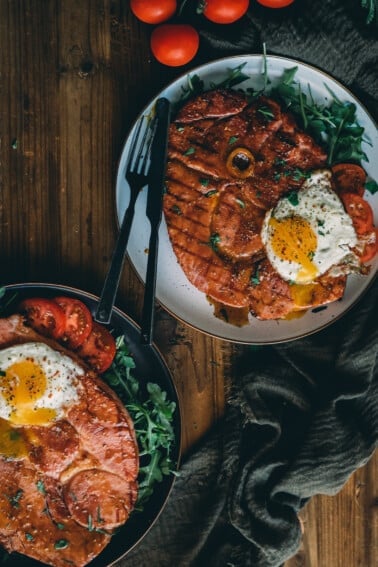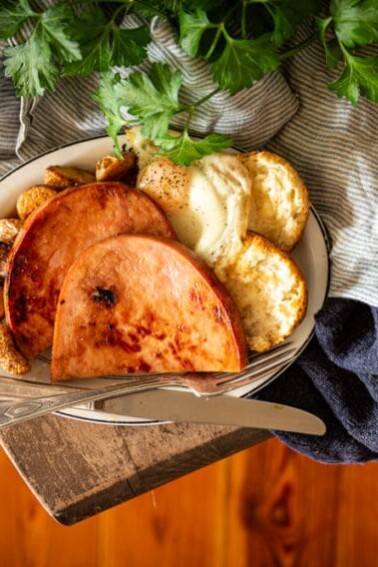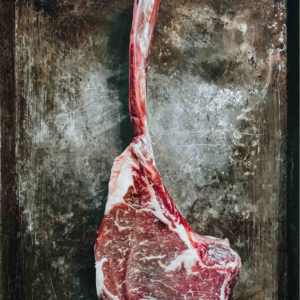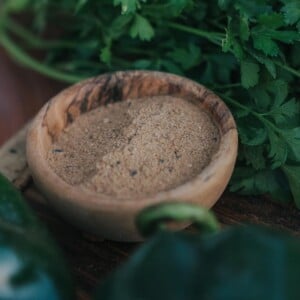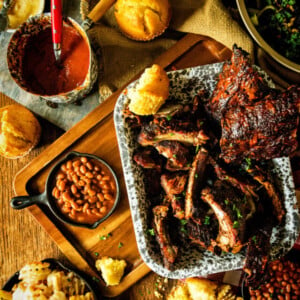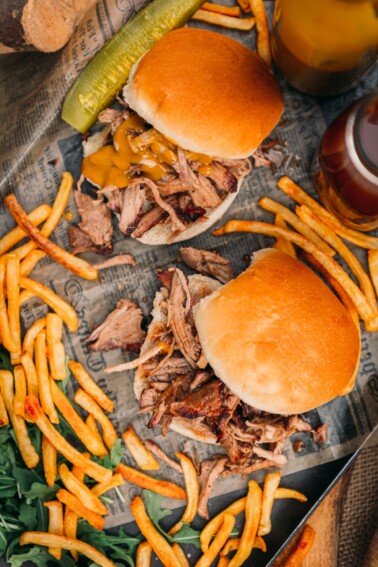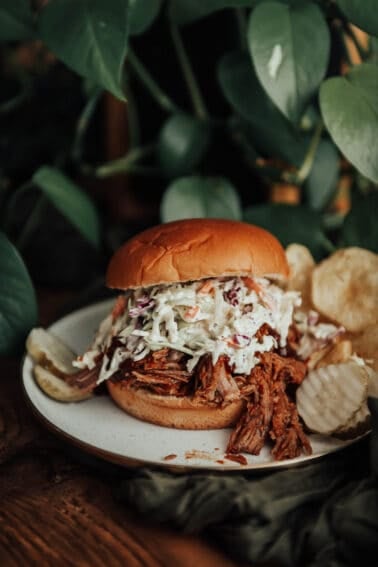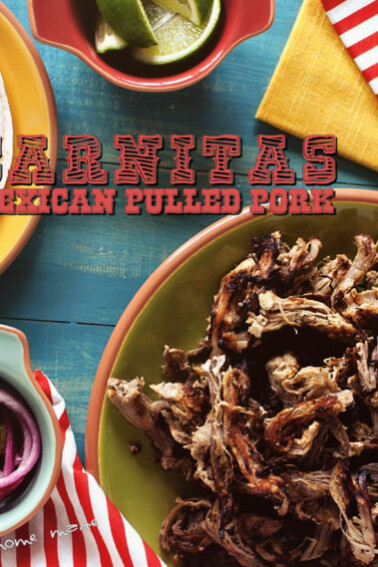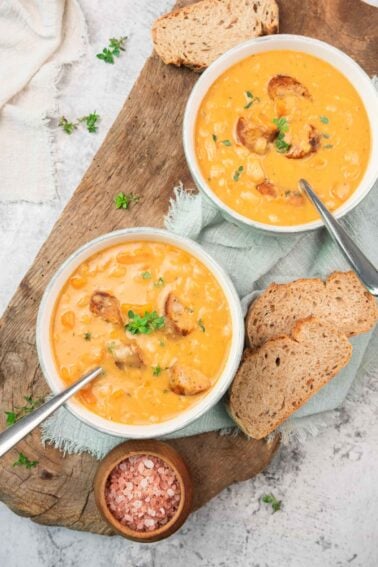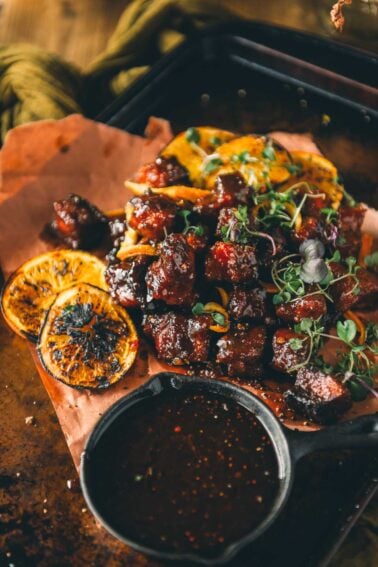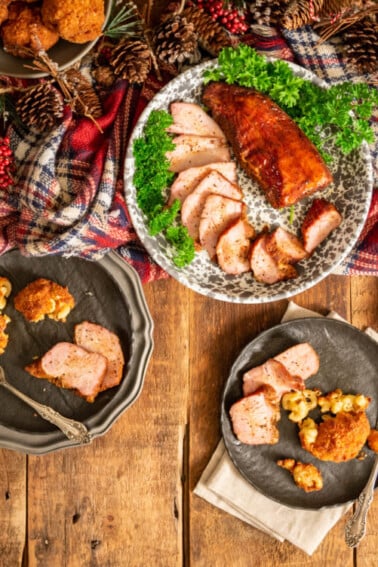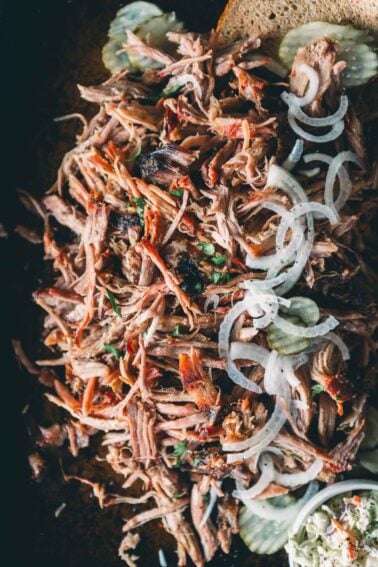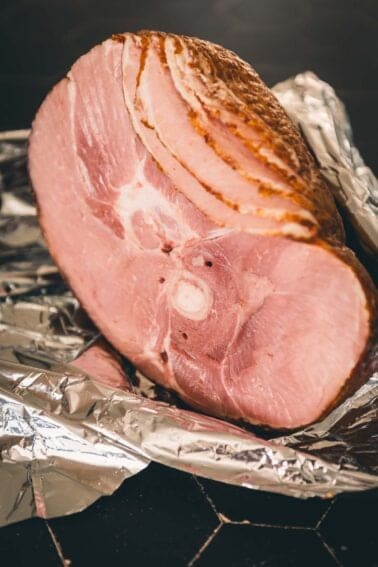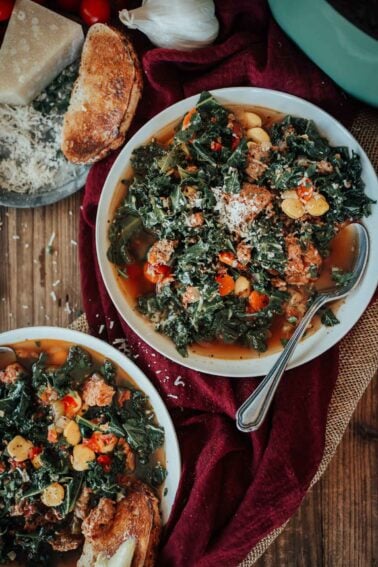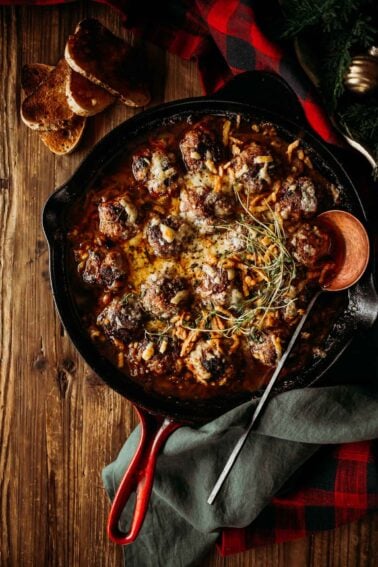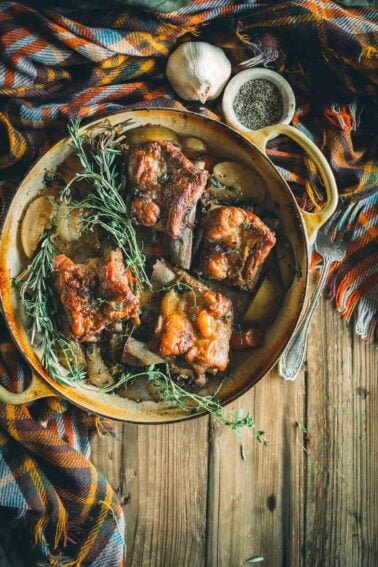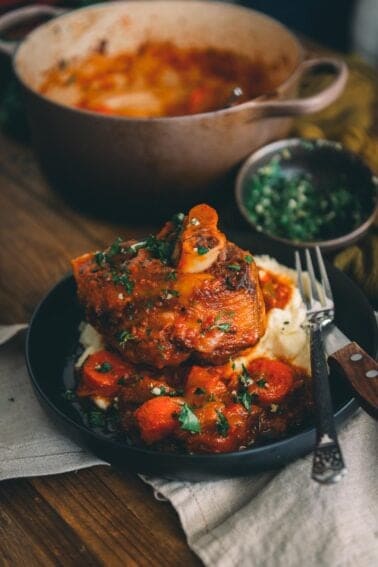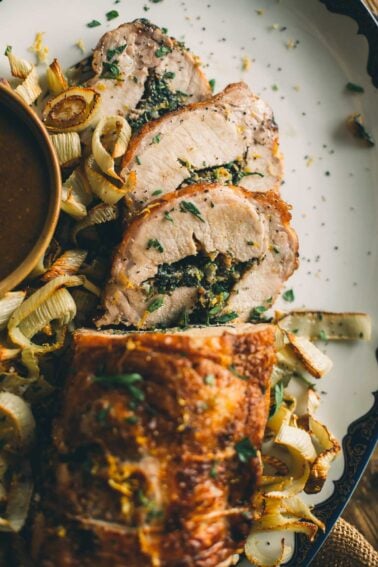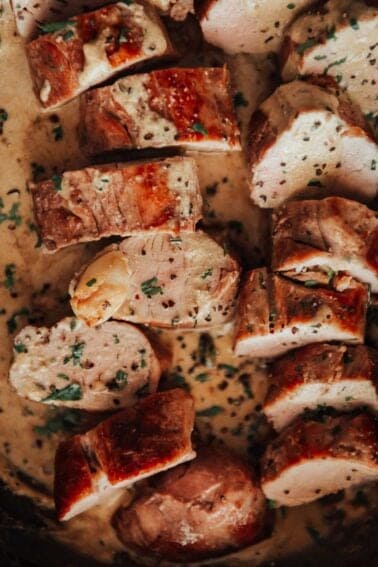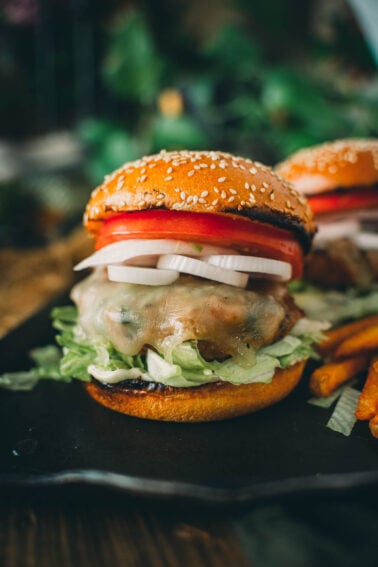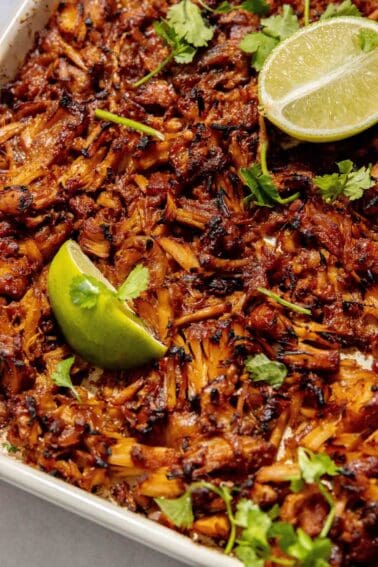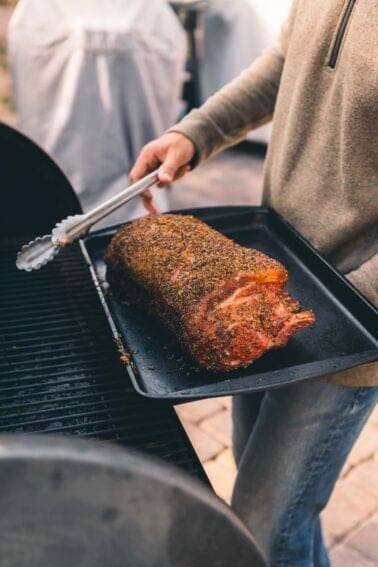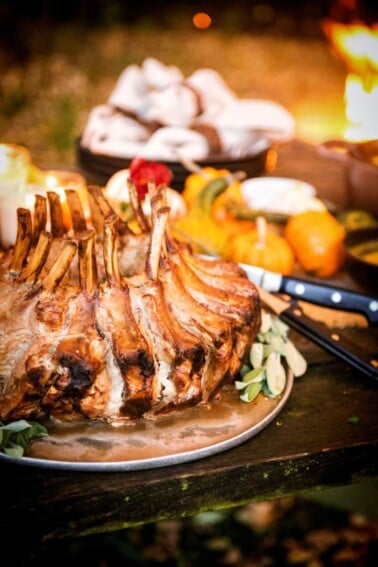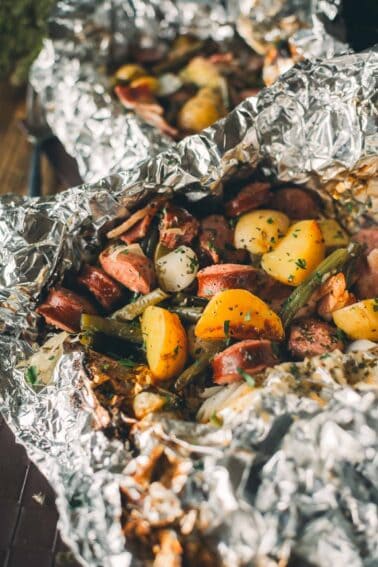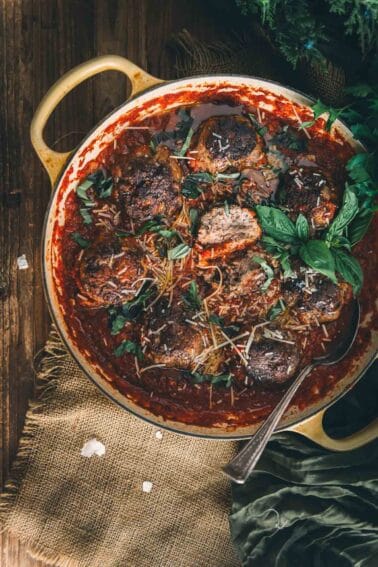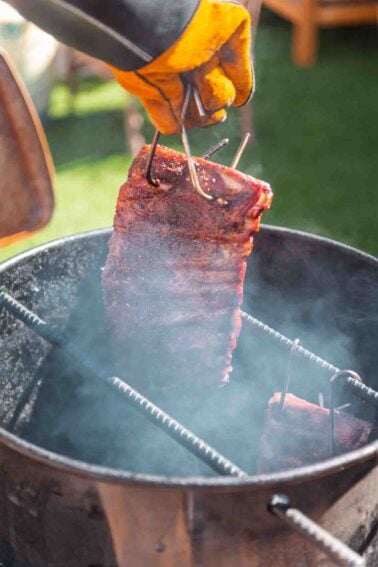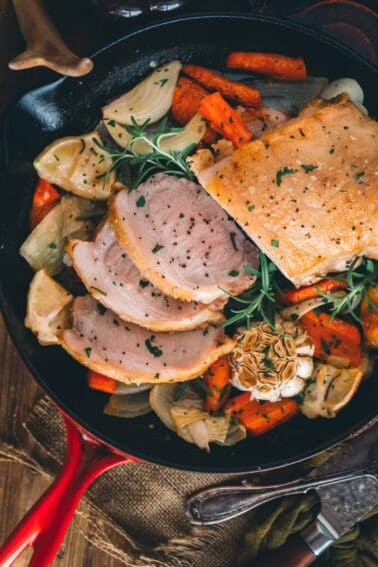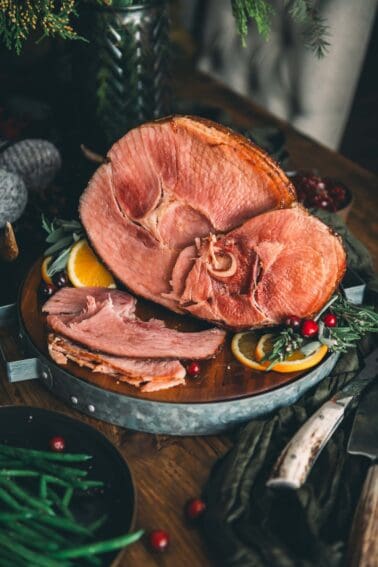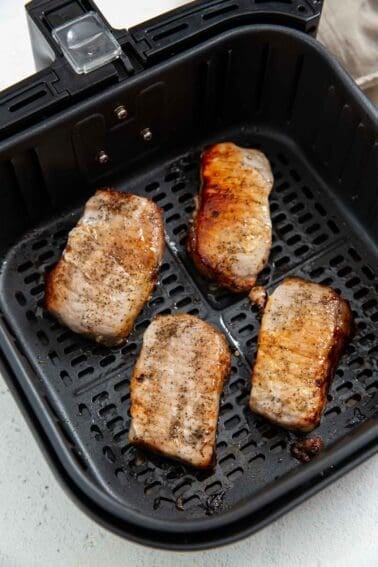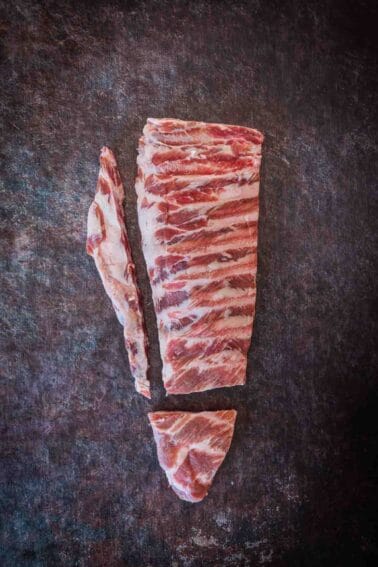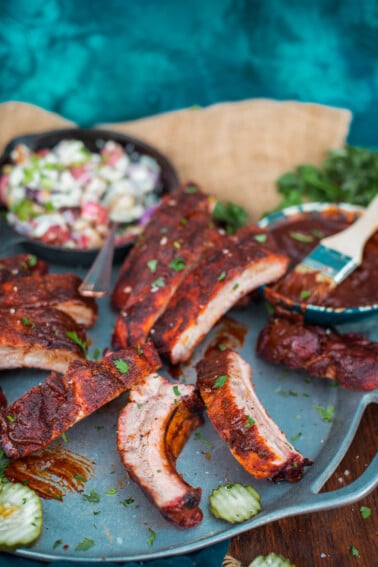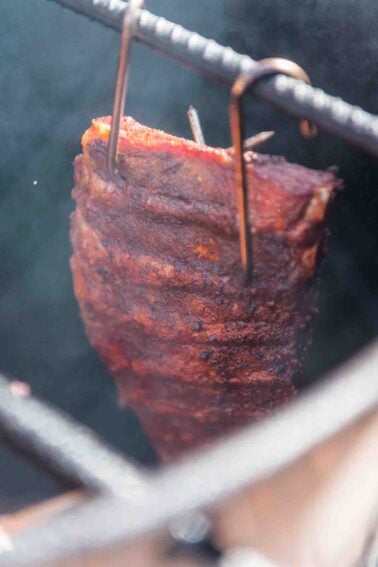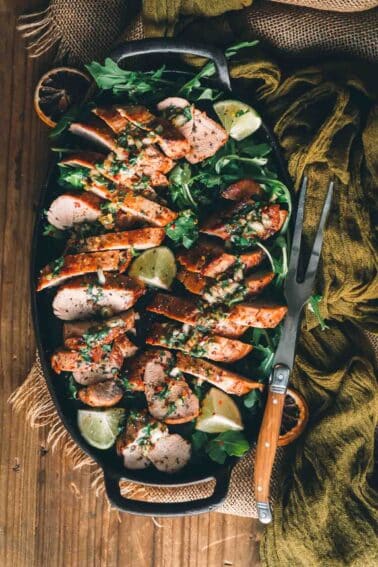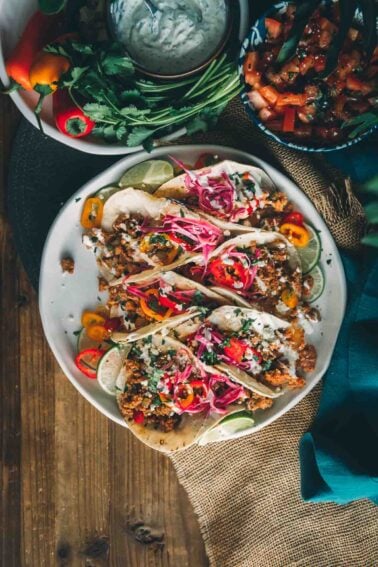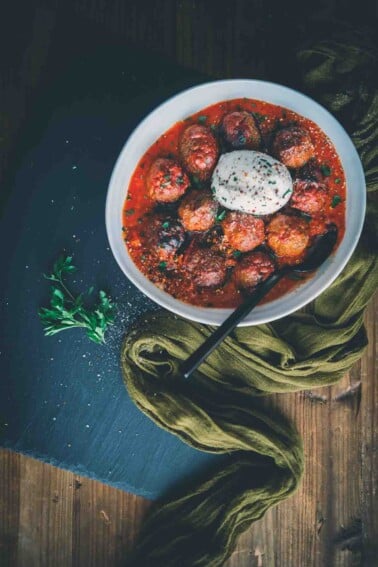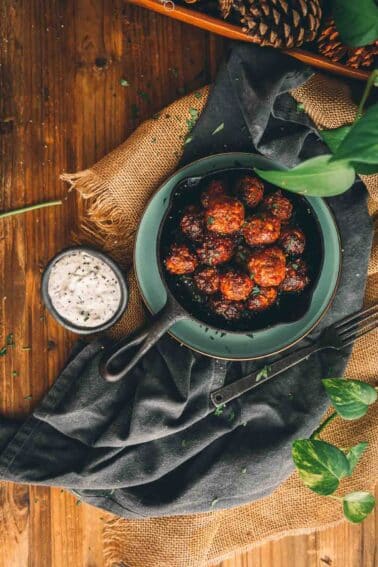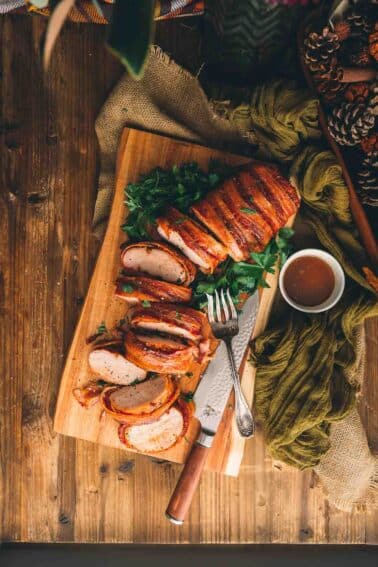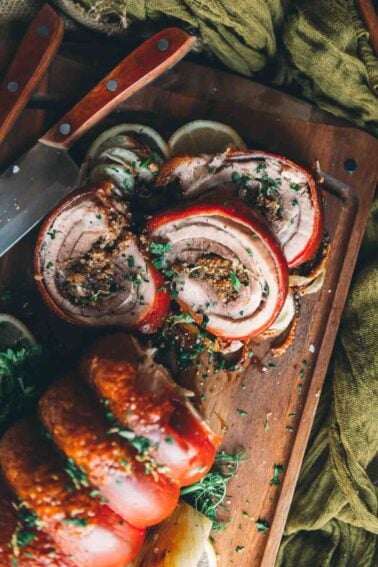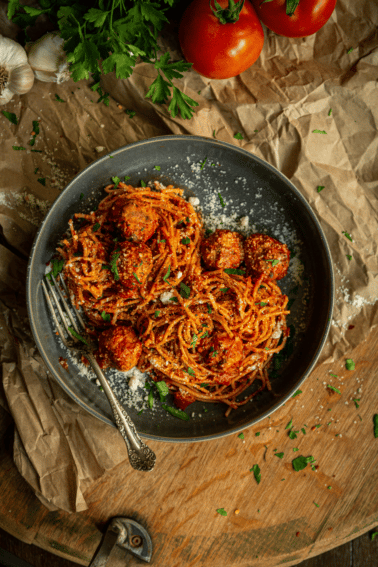Recipes With Pork
Find recipes by cut:
Most Popular pork Recipes
Recipes With Pork
Perfect Oven-Roasted Rack of Pork Recipe
Recipes With Pork
Bacon-Wrapped BBQ Fatty Recipe
Dinner Recipes
Charcoal Grilled Pork Roast
About Pork
Technically classified as red meat, pork has been marketed for years as ‘the other white meat’ and is currently the most common protein enjoyed around the world. Pork is a good source of essential nutrients and vitamins, including iron, B6, and zinc.
Pork is commonly ready for market at around 250 + pounds but is far leaner due to diet and science than the pork of generations past. And federal regulations prohibit the use of hormones in pork.
It’s a blank canvas for flavors and picks up spices, herbs, and aromatics well, making it a great choice for easy weeknight dinners, long braises, and good old-fashioned barbecue.
Pork breeds
Where commercial farming sustains most of our daily purchases, it’s exciting to know pork, like beef, has variety. Bespoke butcher shops and online meat purveyors now make Heritage breeds readily available. Though more expensive than the commercial pork you find at the market, these breeds do pack a deeper pink-to-red color that looks more like traditional red meat, and a heartier flavor overall.
We are fans of Duroc, Berkshire, and Iberico pork when we have the chance to cook with them. If you’re interested in buying meat online and trying something new, be sure to check out our guide on our favorite places to order meat online.

Meat guides & Resources
Recipes With Pork Tenderloin
Recipes With Pork
Juicy Perfectly Grilled Pork Tenderloin
Recipes With Pork
Smoked Bacon Wrapped Pork Tenderloin
Dinner Recipes
Pork Tenderloin over Three Cheese Gnocchi
Campfire Recipes
Quick Mojo Pork Bites in Foil Packet
Pork Chop Recipes
Sauces, Mops, & Condiments
Pork Chop Marinade
Recipes With Pork
Grilled Pork Chops
Recipes With Pork
Double-Cut Cast Iron Pork Chops
Recipes With Pork
Fried Pork Chop Sandwich
Recipes With Pork
Pan Seared Pork Chops
Recipes With Pork
Baked Bone-In Pork Chop
How to Cook Pork: Pork Temperature Guide
For years, pork suffered from being overcooked, causing the leaner cuts to dry out, lose flavor and become tough. According to the USDA, pork is safe to eat at a minimal temperature of 145 °F, which will leave it juicy, tender, and have a slight hint of pink color. For shredded or pulled pork, tougher cuts like pork shoulder, or even ribs, you want to go well past the temp for well done, so the fibers break down and become tender.
| MEDIUM WELL 145 °F | WELL DONE 160 °F | GROUND 160 °F |
Take into consideration that the temperature will continue to rise from 5 °F to 10 °F while the meat rests.
With pork, it’s crucial to hit the temperature spot on, as even the slightest error can make it overdone or underdone. Always use a quality instant-read digital thermometer inserted away from the bone in the thickest part of the meat.
But what about trichinosis? Modern animal welfare programs and pork farmers have pretty much eradicated the possibility of trichinosis from American-breed pork. However, cooking meat to the recommended food-safe temperature kills any bacteria making it safe for consumption.
BASIC TIPS FOR COOKING Pork:
The taste and texture of pork suffer greatly if overcooked. Being mindful of the internal temperature is the most important thing when cooking pork to guarantee tender, juicy bites. Know if you are working with a quick cooking chop over hot heat or a pork belly, where the fat will need time to render and become delicious.
Check your label when buying pork to make sure it wasn’t injected with additional liquid, as this can affect cooking and texture. And salt as you go not to overseason your pork.
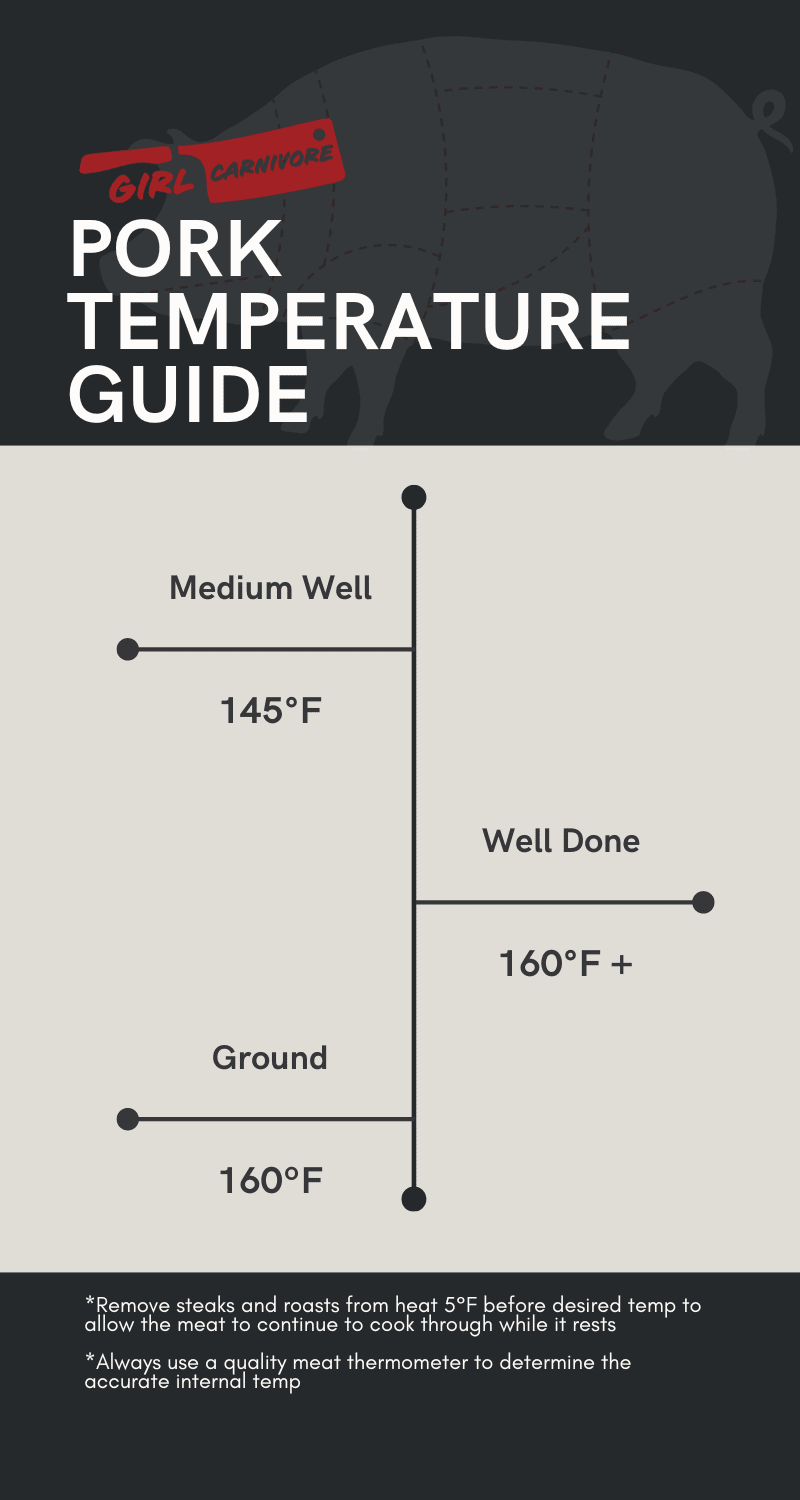
Pork Recipes For Dinner: Smoked Ribs
Recipes With Pork
3 2 1 Ribs Traeger (Easy Pellet Smoker Recipe)
Recipes With Pork
Dry Rubbed Smoked Baby Back Ribs
Recipes With Pork
Memphis Style Smoked Spare Ribs
Recipes With Pork
Smoked St. Louis Ribs
Ground Pork Recipes
Recipes With Pork
Easy Ground Pork Tacos
Recipes With Pork
Bacon Wrapped Meatloaf
Recipes With Pork
Camping Make-Ahead Breakfast Burritos
Recipes With Pork
Bacon-Wrapped Jalapeño Poppers
Pork as a seasoning
Not only is pork amazing as a main dish, but is often used to flavor other dishes as well, through bacon or pancetta. And offers a great solution for low-carb diets with pork panko, made of ground fried pork skin, working as a substitute in most cases for traditional bread crumbs.
Quick Recipes With Pork
Recipes With Pork
How to Cook Ham Steak (with the best Brown Sugar Glaze!)
Dinner Recipes
Grilled Ham Steaks with Brown Sugar-Mustard Glaze
GC Original
Maple Glazed Ham Steaks with Red-Eye Gravy
Helpful How-Tos
Pulled Pork Recipe For Dinner
Recipes With Pork
Carolina Pulled Pork
Recipes With Pork
Easy Slow Cooker Pulled Pork
Recipes With Pork
Maple Pulled Pork
Recipes With Pork
Pork Carnitas
What to serve with pork
Pork pairs wonderfully with almost anything. It picks up on sweet and savory flavors and seasonings, like cola and maple syrup, to warm ancho and cayenne. We love pairing fatty pork with great condiments, like mustard-based bbq sauce to cut through the flavor and crisp slaw or veggies to add texture. We also love pairing it with rich dishes like rajas con crema or creamy Dutch oven macaroni and cheese.
Newest Recipes With Pork
Beef Recipes
Lasagna Soup (All the Comfort, One Pot)
Dinner Recipes
Creamy White Bean Soup with Sausage
Recipes With Pork
Smoked Pork Belly Burnt Ends with Maple Chipotle Bourbon Glaze
Recipes With Pork
Smoked Maple Glazed Pork Tenderloin
Recipes With Pork
Pulled Pork Chili
Recipes With Pork
Smoked Picnic Shoulder
Recipes With Pork
Kale and Sausage Soup
Ground Beef
French Onion Meatballs
Recipes With Pork
Cider Braised Pork Short Ribs
Recipes With Pork
Braised Pork Shanks
Recipes With Pork
Stuffed Pork Loin
Recipes With Pork
Sous Vide Pork Tenderloin
Recipes With Pork
Grilled Ground Pork Burgers with Hatch Chiles
Recipes With Pork
Easy Dutch Oven Carnitas
Recipes With Pork
Smoked Pork Crown Roast
Campfire Recipes
Foil pack Sausage and Potatoes
Recipes With Pork
Slow Cooker Pulled Pork Enchiladas
Beef Recipes
Homemade Polpette Recipe
Recipes With Pork
Sous Vide Pork Loin Recipe
Recipes With Pork
Air Fryer Pork Chops
Recipes With Pork
Boneless Pork Loin Roast In Oven
Recipes With Pork
Smoked Rack of Pork
Recipes With Pork
How to Cook Spiral Ham
Recipes With Pork
Thick Pork Chops in the Air Fryer
Recipes With Pork
How to Trim Spare Ribs: Step-By-Step Guide
Sauces, Mops, & Condiments
Pork Chop Marinade
Recipes With Pork
Grilled Pork Chops
Recipes With Pork
Smoked Pork Spare Ribs
Recipes With Pork
Oven Roasted Pork Tenderloin
Recipes With Pork
Chorizo Street Tacos
Beef Recipes
Easy Smoked Meatballs
Recipes With Pork
Sausage Balls
Recipes With Pork
Smoked Brie
Recipes With Pork
How to Smoke a Pork Loin
Recipes With Pork
Roasted Porchetta
Recipes With Pork

